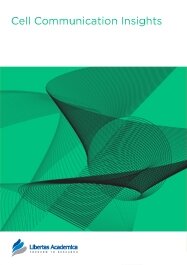

Publication Date: 11 Jun 2009
Type: Original Research
Journal: Cell Communication Insights
Citation: Cell Communication Insights 2009:2 1-11

TGF-β1 and its target gene encoding plasminogen activator inhibitor-1 (PAI-1) are major regulators of capillary outgrowth, vessel maturation and angiogenic network stability. The increasing realization of the complexity of PAI-1 action in the vascular system requires analysis of specific signaling events that impact its expression in a physiologically-relevant cell system. PAI-1 was required for tubular differentiation and maintenance of cellular survival in complex gels since targeted disruption of PAI-1 synthesis or activity with antisense constructs or function-blocking antibodies resulted in network regression. Indeed, serum-deprivation-induced apoptosis of tubulogenic T2 cells was concentration-dependently inhibited by addition of a stable PAI-1 mutant protein consistent with the established pro-survival role of PAI-1 in vascular endothelial cells. PAI-1 induction and ERK pathway activation in response to TGF-β1 was attenuated by EGFR signaling blockade (with AG1478) or preincubation with the MMP/ADAM inhibitor GM6001. The combination of AG1478 + GM6001 completely ablated both responses suggesting that EGFR transactivation is important in PAI-1 gene control and may, at least partially, involve ligand shedding. TGF-β1-stimulated PAI-1 induction was preceded, in fact, by EGFR phosphorylation on Y845 (a src kinase target residue). EGFR1 knockdown with lentiviral shRNA constructs, moreover, effectively decreased (by >75%) TGF-β1-stimulated PAI-1 expression whereas infection with control (i.e. GFP) viruses had no effect. TGF-β1 failed to induce PAI-1 synthesis in EGFR-deficient fibroblasts while introduction of a wild-type EGFR1 construct in EGFR -/- cells rescued the PAI-1 response to TGF-β1 confirming, at a genetic level, the targeted knockdown data. The continued clarification of novel cooperative signaling cascades that impact expression of important angiogenic genes (e.g. PAI-1) may provide therapeutically useful targets to manage the pathophysiology of human neoplastic and vascular diseases.
PDF (3.28 MB PDF FORMAT)
RIS citation (ENDNOTE, REFERENCE MANAGER, PROCITE, REFWORKS)
BibTex citation (BIBDESK, LATEX)

My laboratory has published several papers in Cell Communication Insights. In each case, reviewer comments were returned promptly; the suggested revisions were both fair and quite helpful, reflecting positively on the quality of the review. Once accepted, the editorial office provided clear and frequent updates on the progress of our manuscripts through each step of the publication process. When necessary, I had prompt email responses to my questions and the figure quality was exceptional. Keep ...
Facebook Google+ Twitter
Pinterest Tumblr YouTube